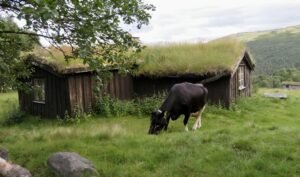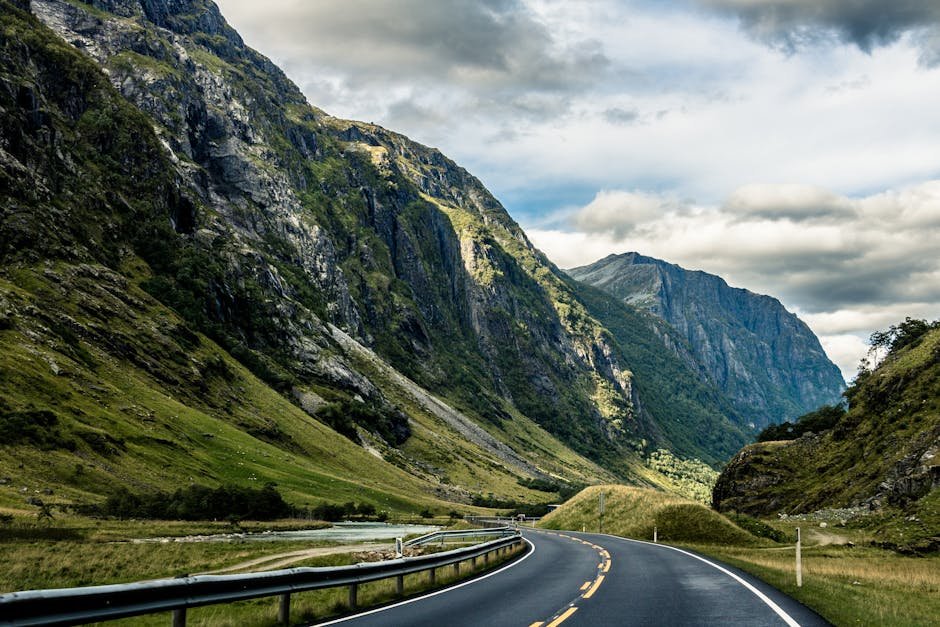

Top Five Self-Driving Routes in Norway: An Adventure for Tourists
Norway is a country known for its breathtaking natural beauty—fjords, mountains, glaciers, and coastal roads that stretch into seemingly endless landscapes. One of the best ways to experience Norway’s incredible scenery is by embarking on a self-driving adventure. Whether you’re visiting in the long summer days or in the magical winter months, there are self-driving routes that cater to all seasons, and each offers a unique experience. In this guide, we explore five of Norway’s most stunning self-driving routes, taking you through some of the most iconic and lesser-known destinations in the country.
Before hitting the road, it’s important to mention that understanding Norwegian culture and language will significantly enhance your travel experience. If you’re planning to stay in Norway for an extended period or simply want to get a feel for the local customs, consider joining Norwegian language classes at NLS Norwegian Language School in Oslo. You can find more information about our group classes here.
Table of Contents
Toggle1. The Atlantic Road: A Coastal Masterpiece
The Atlantic Road, known as “Atlanterhavsveien” in Norwegian, is often considered one of the world’s most scenic drives. Stretching over 8.3 kilometers, this route connects a series of small islands with bridges that seem to float above the ocean waves. The Atlantic Road is located in the western part of Norway and runs between the towns of Kristiansund and Molde. It offers not only breathtaking views of the ocean but also a thrilling experience as the road twists and turns over rocky outcrops and coastal inlets.
Highlights:
- Storseisundet Bridge: The largest and most famous bridge on the route, with its dramatic curve that makes it appear as though the road disappears into the sky.
- Fishing Spots: Along the way, you’ll find numerous places to stop for fishing. Some visitors are lucky enough to catch fresh fish directly from the ocean.
- Wildlife Watching: Seabirds, seals, and even whales are often spotted along the Atlantic Road. The road’s proximity to the ocean makes it ideal for wildlife enthusiasts.
Best Time to Visit:
The Atlantic Road is a spectacular drive year-round, but for the most pleasant weather conditions, summer (June-August) is ideal. In winter, the road can be stormy and dramatic, but it remains open and becomes a popular destination for those looking to experience Norway’s rugged coastal weather.
Tips:
- Duration: Although the road itself is relatively short, you should set aside at least a few hours to enjoy the scenery, stop at viewpoints, and perhaps have a meal at one of the local seaside restaurants.
- Accommodation: Consider staying in nearby Kristiansund or Molde for easy access to the Atlantic Road.
2. Trollstigen: Norway’s Most Famous Mountain Road
Trollstigen, or the Troll’s Ladder, is one of Norway’s most famous mountain roads. It’s part of the National Tourist Route and offers a thrilling drive through steep cliffs and hairpin bends. Located in the heart of the Rauma Municipality, Trollstigen connects the towns of Åndalsnes and Valldal. The road is surrounded by towering mountains and deep valleys, making it one of the most dramatic driving experiences in Norway.
Highlights:
- Trollstigen Viewpoint: Near the summit of the road, you’ll find a spectacular viewpoint where you can stop and take in the full beauty of the surrounding landscapes, including cascading waterfalls and lush valleys.
- The 11 Hairpin Bends: Driving Trollstigen is not for the faint-hearted, as it features 11 sharp hairpin bends that wind up the steep mountainside. It’s an exhilarating experience for those who love mountain driving.
- Stigfossen Waterfall: As you drive, you’ll pass this stunning waterfall, which cascades down the mountainside and under the road via a stone bridge.
Best Time to Visit:
Trollstigen is only open during the summer months, typically from May to October, depending on weather conditions. Winter snow makes the road impassable, but when it is open, it provides one of the most breathtaking driving experiences in Norway.
Tips:
- Duration: The drive itself takes about 20 minutes, but you’ll want to allocate more time to stop at viewpoints and explore the surrounding areas.
- Accommodation: Stay in the nearby town of Åndalsnes, which offers a variety of accommodation options and outdoor activities.
3. The Geiranger-Trollstigen Scenic Route: A UNESCO World Heritage Drive
The Geiranger-Trollstigen Scenic Route is another of Norway’s most famous and scenic drives. This route takes you from the UNESCO World Heritage site of Geirangerfjord through Trollstigen and all the way to the town of Åndalsnes. Along the way, you’ll witness some of the most dramatic landscapes Norway has to offer, from fjords and waterfalls to towering mountains and valleys.
Highlights:
- Geirangerfjord: One of the most beautiful fjords in Norway, Geirangerfjord is surrounded by towering cliffs and dotted with picturesque farms and villages.
- The Seven Sisters Waterfall: As you drive through Geirangerfjord, you’ll pass this iconic waterfall, which consists of seven separate streams cascading down a cliff.
- Eagle’s Road: This serpentine road features 11 hairpin bends and offers spectacular views of Geirangerfjord from above.
Best Time to Visit:
The Geiranger-Trollstigen Scenic Route is best visited in summer when the weather is mild and the roads are open. The route typically opens in late spring (May) and remains open until early autumn (October).
Tips:
- Duration: Plan for a full day to drive the entire route and enjoy the numerous viewpoints, hikes, and photo opportunities along the way.
- Accommodation: Geiranger offers a variety of accommodation options, from luxury hotels to charming cabins. It’s a great place to stay overnight and enjoy the tranquility of the fjord.
4. The Lofoten Islands: Norway’s Coastal Paradise
The Lofoten Islands are one of Norway’s most iconic and picturesque destinations. Located above the Arctic Circle, the Lofoten Archipelago is known for its dramatic mountains, crystal-clear waters, and charming fishing villages. Driving through the Lofoten Islands allows you to explore this stunning region at your own pace, stopping at beautiful beaches, small towns, and scenic viewpoints along the way.
Highlights:
- Reine: Often considered the most beautiful village in Norway, Reine is surrounded by towering mountains and sits on the edge of a pristine fjord. It’s a perfect place to stop for photos and a bite to eat.
- Haukland Beach: A pristine white sand beach surrounded by mountains, Haukland Beach is one of the most beautiful beaches in Norway and is a must-visit stop on your Lofoten road trip.
- Nusfjord: A charming fishing village that has been preserved as an open-air museum, Nusfjord offers a glimpse into Norway’s maritime history.
Best Time to Visit:
Summer is the best time to visit the Lofoten Islands, as the weather is mild and the days are long. In the winter months, the islands are blanketed in snow, and while beautiful, driving conditions can be more challenging. However, winter is also the best time to see the Northern Lights in Lofoten, making it a magical time to visit.
Tips:
- Duration: To fully experience the Lofoten Islands, plan for at least three days of driving. There are plenty of scenic viewpoints, hiking trails, and charming villages to explore along the way.
- Accommodation: Lofoten offers a variety of accommodation options, from rustic cabins (known as “rorbuer”) to modern hotels. Staying in a traditional rorbu can enhance your experience of the islands’ maritime culture.
5. The Sognefjord Route: Norway’s Longest and Deepest Fjord
Sognefjord, also known as the “King of the Fjords,” is the longest and deepest fjord in Norway. A drive through the Sognefjord region takes you through some of Norway’s most stunning landscapes, from fjords and glaciers to mountains and valleys. The route runs from the town of Bergen to the village of Skjolden at the innermost point of the fjord.
Highlights:
- Nærøyfjord: A UNESCO World Heritage site, Nærøyfjord is one of the most beautiful branches of Sognefjord. It’s surrounded by steep cliffs and offers breathtaking views from both the water and the road.
- Jostedalsbreen Glacier: As you drive through the Sognefjord region, you’ll have the opportunity to visit Jostedalsbreen, the largest glacier in mainland Europe.
- Borgund Stave Church: One of Norway’s most iconic stave churches, Borgund is located near Sognefjord and is a must-see stop on your road trip.
Best Time to Visit:
Summer is the best time to visit Sognefjord, as the weather is mild and the roads are open. However, autumn (September-October) is also a great time to visit, as the fall colors add a beautiful contrast to the blue waters of the fjord.
Tips:
- Duration: Plan for at least two days to explore the Sognefjord region, stopping at viewpoints, hiking trails, and local villages along the way.
- Accommodation: The Sognefjord region offers a variety of accommodation options, from cozy guesthouses to luxury hotels. Staying in a fjord-side village like Balestrand or Flåm is a great way to experience the tranquility of the region.
Conclusion
Norway offers some of the most breathtaking self-driving routes in the world, each offering unique experiences and landscapes that change with the seasons. Whether you’re navigating the coastal wonders of the Atlantic Road, climbing the mountain passes of Trollstigen, or exploring the stunning fjords of Sognefjord, a road trip through Norway is an adventure like no other.
As you prepare for your Norwegian adventure, don’t forget that understanding the local language and culture will enhance your experience. Consider enrolling in Norwegian language classes at NLS Norwegian Language School in Oslo to make the most of your trip. You can learn more and sign up for our group classes here.
So, pack your bags, get behind the wheel, and start your unforgettable Norwegian road trip!
If you want to learn Norwegian, you can register for classes here. We look forward to hearing from you and helping you become fluent in Norwegian.





